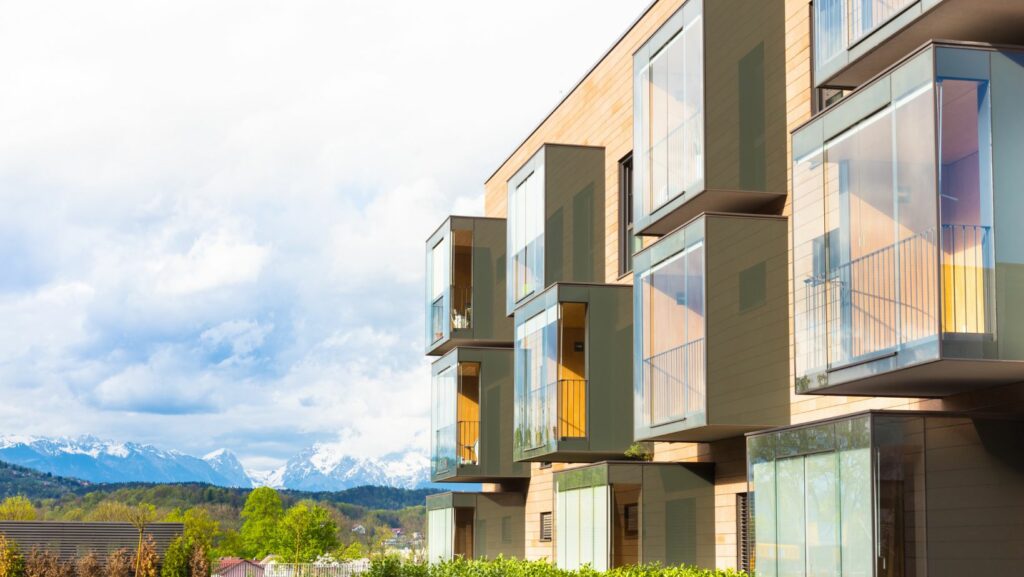Urban landscapes are constantly evolving, and Dallas is no exception. However, it seems we’re lagging behind in one crucial aspect – integrating public spaces into our architectural designs. Cities like Houston and New York are setting the trend, creating structures that are not just functional, but also add to the city’s social fabric.
In Houston, for instance, the new Texas Commerce Tower will use only a third of its lot for the building, dedicating the rest to a public park and plaza. Meanwhile, New York’s Midtown Planning Office is encouraging the creation of pedestrian-friendly spaces in new buildings. This shift in architectural trends is not just about aesthetics, it’s about creating a city that’s more livable and inviting.
As we dive deeper into this topic, we’ll explore how these architectural trends are impacting relocation decisions and why Dallas needs to catch up. Stay with us as we unfold the story of architecture and its influence on urban living.
Architectural Trends in Dallas
Broadly speaking, two distinctive trends shape Dallas’s architectural scene. First, DBA Architects’ persistent commitment to sustainable and innovative design for energy-efficient buildings, including LEED-certified designs and green building strategies, redefines the city’s approach to sustainability. These novel building strategies adopted citywide play a crucial part in conserving energy, thus making Dallas a coveted relocation prospect for residents who are environmentally conscious.
Second, mixed-use development projects, integrating residential, commercial, and retail spaces into one, are becoming the city’s new architectural mantra. These multifunctional developments foster walkability, convenience, and social interaction, promoting an urban, live-work-play environment.
By embracing sustainable designs and fostering mixed-use developments, Dallas upholds its reputation for vibrant and pioneering architecture, with direct implications on its attractiveness for prospective relocations.
Dallas Migration and Its Impact On Architecture
Migration patterns to Dallas lead to significant influences on the city’s architectural trends. Reflecting these changes, office designs evolve from sizable corner workplaces with spaced cubicles to bullpen seating and higher-density layouts, accommodating more occupants per square foot. But, remember, with the rise in layoffs and retrenchments comes the simultaneous increase in sublease space and footprint reductions.

However, in contrast, the real estate footprint may remain unchanged due to the need for social distancing among in-office workers. In essence, these changes, born from relocation trends, reciprocally transform the architectural face of Dallas.
Changes in Design Trends
As Dallas evolves, architectural trends do as well. Notably, the move towards resilient structures escalates, taking a front seat in design directives. Resilient buildings aren’t just sustainable; they’re adaptable. Spearheaded by eminent firms, such buildings morph into changing environments, serving as shelters during disasters, remaining connected to the community, and contributing to sustainability goals. Tools at architects’ disposal support this trend, helping model project performance and enabling buildings to “learn” adaptability.
In contrast with commercial architecture, home renovation trends take a dissimilar route. Often, homeowners find that what’s trendy today might become passé in a decade. Therefore, mapping out future-proof plans with professionals becomes indispensable for a long-term return on investment. As real estate footprints evolve owing to relocation patterns, Dallas architects and remodellers find themselves innovating continually, balancing the scales between cutting-edge design and functionality.
In Dallas, the collaboration of architects with move out cleaning services becomes vital in ensuring a seamless handover of premises – be it residential, commercial, or an urban project. Teams like that at Blackline Renovations work beside their clients, taking projects from inception to final walk-through, ensuring every aspect of the home upgrade is as per the clients’ needs and preferences. Vital to the relocation process, such services can aid the transfer while contributing to the city’s architectural scene.
These shifts aren’t solely aesthetic; they are indicative of deeper societal shifts, fueling relocations and shaping Dallas, making it more appealing to prospect residents. These trends are establishing the city as a vibrant and pioneering architectural hub.
The Decision Process and Factors to Consider When Relocating
In determining relocation, intense deliberation is involved. It’s not just about pinpointing another commercial hub in Dallas, but obtaining a place that aligns with the emerging architectural trends is vital. Considerations may encompass space adaptability, both for technological advancements and infectious diseases like the COVID-19 pandemic, showing the importance of design resilience.

With the incorporation of resilient and sustainable trends in architectural designs, businesses must be proactive in their decision-making, maintaining safety and providing for fluctuating workforce needs while promoting social connectivity and urban vibrancy. By understanding these factors, relocation can become a strategic opportunity rather than an operational challenge.
Understanding How Relocation Influences Architecture
When examining relocation, it’s crucial to acknowledge the role of architecture. Relocation isn’t merely a physical shift; it incorporates adaptation to new architectural trends, too. Buildings in Dallas are adapting, leaning towards resilient, sustainable designs.
Businesses are also considering architecture’s influence on migration. The adoption of high-density layouts, for example, maximizes square footage utilization while promoting social connectivity— a testament to architecture’s role in shaping our workplaces. However, balancing new norms like social distancing with space efficiency presents dilemmas.
Interestingly, recent trends hint at a resurgence in demand for personal office spaces, disrupting the past 15 years’ progression towards open workspaces. As businesses relocate, they’re reflecting on the choices of architectural trends: revisiting conventional designs or tackling new, high-density structures. It’s a pivotal juncture where relocation decisions have the power to direct future architectural trends.


More Stories
The Secret to Long-Lasting Cylinders: Expert Cylinder Plating Services
Beyond the TFSA and RRSP: Non-Registered Investment Accounts in Canada
From Wet to Wow: How Basement Waterproofing Unlocks Hidden Home Potential